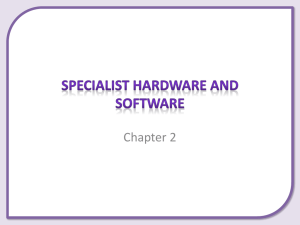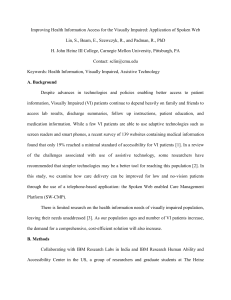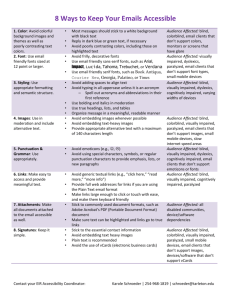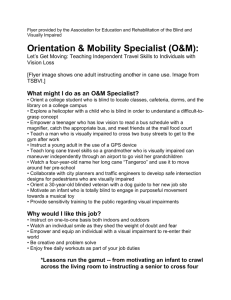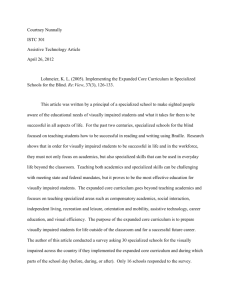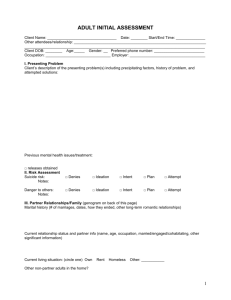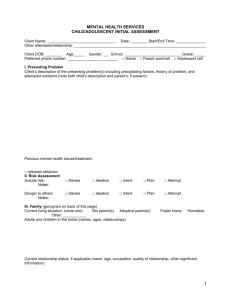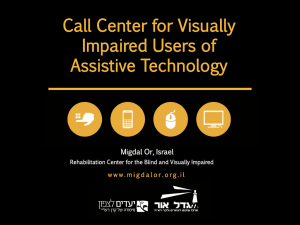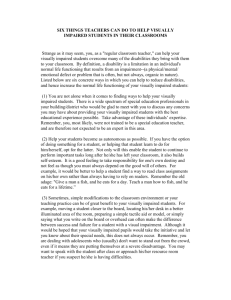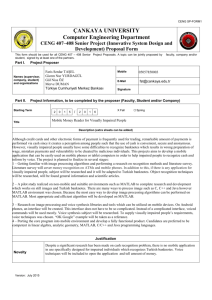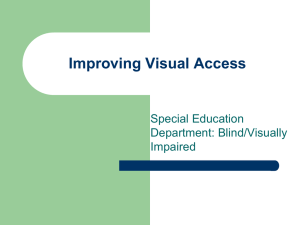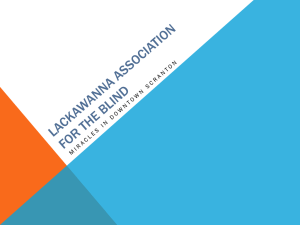How to Successfully Train the Physically Impaired Patient to Perform
advertisement
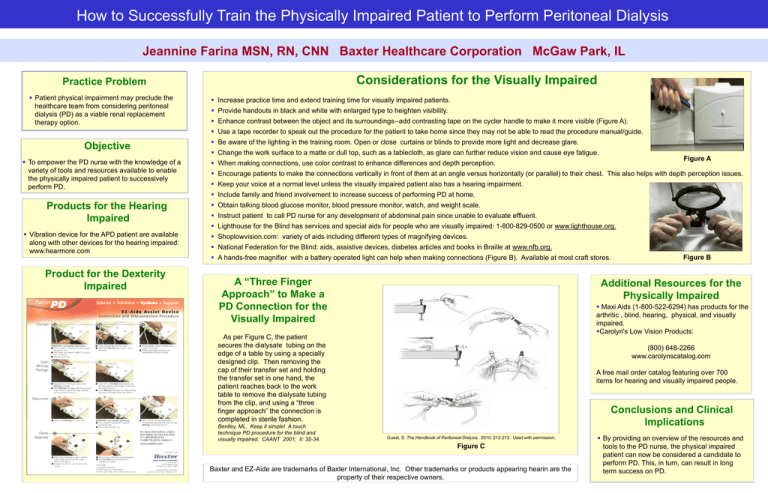
How to Successfully Train the Physically Impaired Patient to Perform Peritoneal Dialysis Jeannine Farina MSN, RN, CNN Baxter Healthcare Corporation McGaw Park, IL Considerations for the Visually Impaired Practice Problem Patient physical impairment may preclude the healthcare team from considering peritoneal dialysis (PD) as a viable renal replacement therapy option. Increase practice time and extend training time for visually impaired patients. Provide handouts in black and white with enlarged type to heighten visibility. Enhance contrast between the object and its surroundings--add contrasting tape on the cycler handle to make it more visible (Figure A). Use a tape recorder to speak out the procedure for the patient to take home since they may not be able to read the procedure manual/guide. Objective To empower the PD nurse with the knowledge of a variety of tools and resources available to enable the physically impaired patient to successively perform PD. Be aware of the lighting in the training room. Open or close curtains or blinds to provide more light and decrease glare. Change the work surface to a matte or dull top, such as a tablecloth, as glare can further reduce vision and cause eye fatigue. Figure A When making connections, use color contrast to enhance differences and depth perception. Encourage patients to make the connections vertically in front of them at an angle versus horizontally (or parallel) to their chest. This also helps with depth perception issues. Keep your voice at a normal level unless the visually impaired patient also has a hearing impairment. Include family and friend involvement to increase success of performing PD at home. Products for the Hearing Impaired Vibration device for the APD patient are available along with other devices for the hearing impaired: www.hearmore.com Product for the Dexterity Impaired Obtain talking blood glucose monitor, blood pressure monitor, watch, and weight scale. Instruct patient to call PD nurse for any development of abdominal pain since unable to evaluate effluent. Lighthouse for the Blind has services and special aids for people who are visually impaired: 1-800-829-0500 or www.lighthouse.org. Shoplowvision.com: variety of aids including different types of magnifying devices. National Federation for the Blind: aids, assistive devices, diabetes articles and books in Braille at www.nfb.org. A hands-free magnifier with a battery operated light can help when making connections (Figure B). Available at most craft stores. A “Three Finger Approach” to Make a PD Connection for the Visually Impaired Additional Resources for the Physically Impaired Maxi Aids (1-800-522-6294) has products for the arthritic , blind, hearing, physical, and visually impaired. Carolyn's Low Vision Products: As per Figure C, the patient secures the dialysate tubing on the edge of a table by using a specially designed clip. Then removing the cap of their transfer set and holding the transfer set in one hand, the patient reaches back to the work table to remove the dialysate tubing from the clip, and using a “three finger approach” the connection is completed in sterile fashion. Bentley, ML. Keep it simple! A touch technique PD procedure for the blind and visually impaired. CAANT 2001; II: 32-34. Figure B (800) 648-2266 www.carolynscatalog.com A free mail order catalog featuring over 700 items for hearing and visually impaired people. Conclusions and Clinical Implications Guest, S. The Handbook of Peritoneal Dialysis. 2010: 212-213. Used with permission. Figure C Baxter and EZ-Aide are trademarks of Baxter International, Inc. Other trademarks or products appearing hearin are the property of their respective owners. By providing an overview of the resources and tools to the PD nurse, the physical impaired patient can now be considered a candidate to perform PD. This, in turn, can result in long term success on PD.
